Fly Me To The Moon (and Other Things)
On September 27, 2016, Elon Musk introduced the world to the Interplanetary Transport System (ITS) at the IAC 2016 in Guadalajara, Mexico. This ambitious system is designed to provide the means to send hundreds of people to Mars every couple of years along with supplies and materials needed to build fuel plants and the beginnings of a Mars colony. The vehicle, composed of a booster stage and a spaceship (available at the time in cargo and crew varieties), is planned to be larger than the mighty Saturn V rocket that sent humans to the moon and placed the SkyLab space station into orbit.
During that presentation, Elon pointed out a few important details:
- The booster and spacecraft illustrated in the movie above were rendered based off of actual CAD drawings — they had begun serious design work on the vehicle.
- Testing of the engine design used by the vehicle had already begun at the SpaceX McGregor Test Facility in McGregor, TX. The cryogenic methane-fueled Raptor engine had its first firing 2 days before the conference on September 25, 2016. Since a rocket is always built around the engine, this was a very important and exciting reveal.
- That they had built a test tank for the vehicle that was built out of carbon composites rather than an aluminum alloy. This was the largest carbon tank of this sort — designed to handle super cold cryogenic fuel — ever built. Some said at the time that this was the most important reveal of the conference.
These three important highlights solidified what was, at first glance, an audacious although inspiring plan. Important bits of the system were genuinely being worked on and progress was being made.
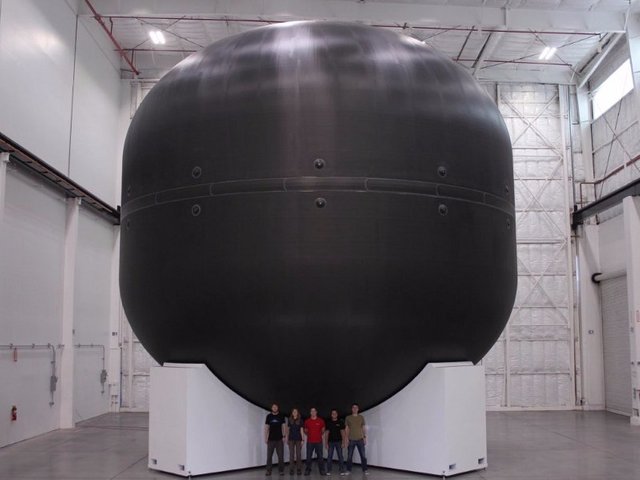
Over the past 12 months, continued work has been done on the Raptor engine and the massive tank pictured above. More about these updates later.
Fast forward a year to September 29, 2017. Elon Musk returned to the IAC 2017, this time in Adelaide, Australia. During his discussion, he presented an updated design for the system as well as building and testing updates.
But first, he struggled over the name. The system as a whole has long been called the BFR. The acronym stands for Big F@#$ing Rocket, or Big Falcon Rocket in polite circles. Coming up to the initial reveal in 2016, SpaceX was apparently struggling with a good name for the system that would not have to be apologetically explained.
For a while, the Mars Colonial Transporter (MCT) was floated. It seemed a reasonable enough name, given that was at the time the intended purpose of the vehicle. But then, a few weeks before the conference, Elon mentioned on Twitter that the name had since changed to represent the more robust mission capabilities, and so was now called the Interplanetary Transport System.
Preview of the @SpaceX interplanetary transport system at @IAC2016https://t.co/Rz4XmeAoRw
-- Elon Musk (@elonmusk) September 18, 2016
@YouTube wait so is it being called the ITS now? Not the MCT?
-- S. Alex Martin (@thescalex) September 18, 2016
its it is
-- Elon Musk (@elonmusk) September 18, 2016
Unfortunately, the name has not stuck. Opening his IAC 2017 speech, Elon mentioned that, “we’re sort of searching for the right name — the code name, at least, is BFR”.
Naming the system does seem challenging; however, the biggest challenge SpaceX is facing is how to pay for it. Elon has not traditionally shied away from high risk ventures. In fact, SpaceX was born in risk and nearly died in the cradle during the development of the Falcon 1 — their first rocket.
Fortunately, fate smiled on them during their 4th launch and they managed to get to orbit (incidentally, this launch occurred on September 28, 2008, just 9 years prior to the IAC 2017 conference). That led to a securing of funds from NASA to build the Falcon 9 and the Dragon spacecraft in order to service the ISS. Further development of the Falcon 9 and the Crew Dragon has been funded by the commercial satellite market and the NASA Commercial Crew contracts.
Funding the BFR is a whole other animal, though. This is an expeditionary sort of endeavor. When it succeeds, it will open up space in much the same way that the DC-3 opened up air travel. This alone will help fund it going forward, but a great deal of the cost must be shouldered by SpaceX in the short term. So steps had to be made to make the BFR subsidize its own development.
The first step was to scale down the vehicle. Speculation and rumor over the past 12 months, had been that the size of the proposed ITS was going to be far too ambitious, at least for the first version. The technological hurdles needed for the massive tanks, for example, although surmountable, would be a significant drain on the progress and funding as well as dragging out the timelines involved. Reducing the size of the vehicle would reduce the cost and length of construction as well as some of the technological challenges involved.
The second step would be to, essentially, bet the house on it. SpaceX is a large company filled with very talented engineers, technicians, and scientists. They have done amazing things with the Falcon and Dragon programs. However, having them split among multiple vehicles and programs is not the most effective way of building a large, ambitious system like the BFR. So SpaceX is planning on retiring the Falcon and Dragon programs and dedicating the staff from those programs on BFR development — just not right way.
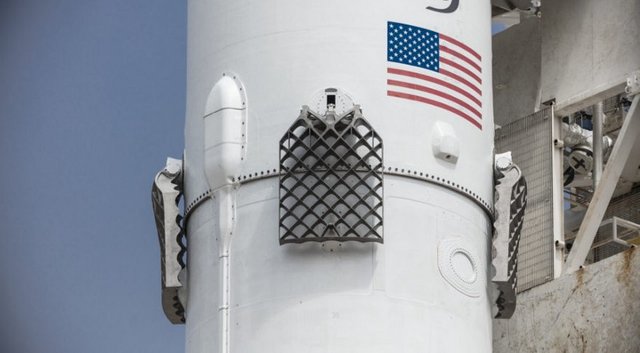
Before the company can be fully transitioned to BFR development, there are important milestones to be accomplished. Probably the single most important one is the launch of the Block V variant of the Falcon 9, expected to be in operation in early spring of 2018. This variant would be the most reusable version of the Falcon 9. Instead of the booster being able to fly a couple of times, as the current Falcon 9 boosters have demonstrated, this variant would be able to fly at least a dozen times before refurbishments and possibly 100 times before a booster is retired.
By building a fleet of Falcon 9 Block V boosters, SpaceX can begin redirecting the resources dedicated to booster construction and still maintain a 30–40 launch per year cadence. However, they would have to maintain a crew to build the second stages of the Falcon 9. Ideally, design changes could be made to make the second stage of the Falcon 9 recoverable, but the announcement at IAC 2017 makes it less likely that the company will pursue this approach. More on that in a moment.
There is another bit of reusability that SpaceX is pursuing, though. That is the recovery of the fairings. The fairings are the clam shell-like components at the top of the rocket that surround and protect the payload as it moves through the atmosphere. While these components are not particularly expensive in relation to the balance of the vehicle, they are a significant bottleneck in the manufacturing process and, as Elon has stated:
“Imagine you had $6 million in cash on a pallet flying through the air that’s just going to smash into the ocean. Would you try to recover that? Yes, you would.”Fairing recovery tests have been underway for some time. While the company has not revealed much about the progress they are making, the overall tone has been positive. Elon has mentioned that they hope to have parachute steering worked out by the end of the year.
Ultimately, though, in order to dedicate the full staff of SpaceX to the BFR project, they have to ensure that the BFR meets or even exceeds the needs and cost expectations of their current customer base as well as opening additional markets. This, by the way, is why spending engineering time and resources on second stage enhancements or recovery is probably not in SpaceX’s game plan. During the presentation at Adelaide, Elon illustrated the possibilities of how BFR can obsolete the current Falcon and Dragon programs. Here are the variants that were presented.
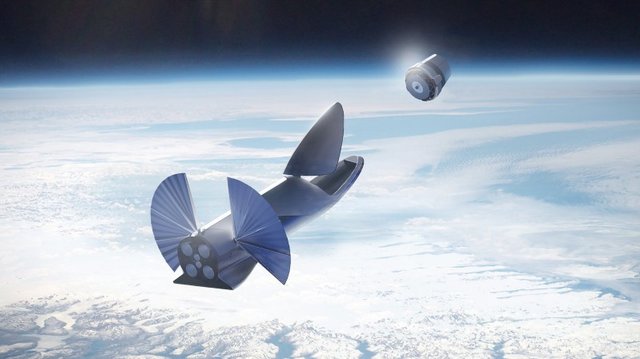 BFR Satellite Delivery variety (SpaceX)
BFR Satellite Delivery variety (SpaceX)The “Chomper” — Satellite deployment version
This variant would be dedicated to delivery of satellites to pretty much any orbit. With a 9 meter (~30 ft) diameter, the vehicle would be able to deploy a space telescope with a mirror twice the size of the current Hubble Space Telescope or half again as large as the upcoming James Webb Space Telescope without any delicate unfolding operations. In addition, this variant could carry large inflatable space stations such as the proposed Bigelow Aerospace Olympus which would need an 8m fairing otherwise. A potential future use of this variant might be the recovery of satellites for orbital cleanup or historical preservation.
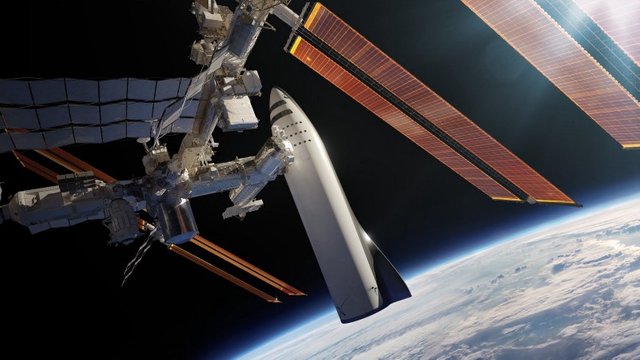 The BFR Crewed variety (SpaceX)
The BFR Crewed variety (SpaceX)Space truck/crew transport
This variant would be capable of doing everything the cargo Dragon already does (e.g. delivery of supplies, experiments, and equipment) as well as the delivery and return of crew that the Dragon 2 will be tasked with. As is common within space flight enthusiast circles, other speculation about uses began immediately. One such use would be for a temporary space station that doesn’t have to meet the strict scheduling and usage protocols of the ISS. And, of course, there is already a market for space tourism, which would dramatically expand once the cost to orbit is a matter of a few thousand dollars or less instead of a few million.
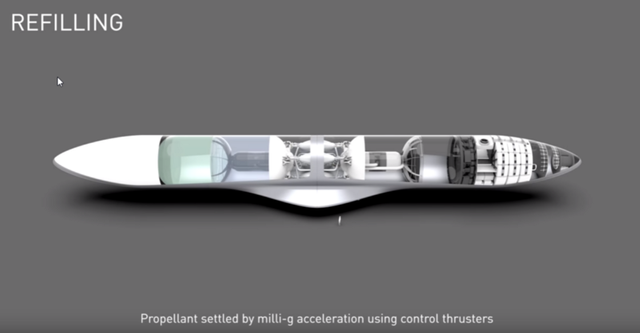
The Tanker
The tanker is the enabler of the next two big mission varieties. While the previous two varieties will help pay the bills and fund future development of the BFR, and thus will most likely be the first versions built; the tankers will enable the deep space missions. As illustrated above, the tankers will mate to the back of the spaceship using the same attachment points that the spaceship uses for the booster. In fact,the same fuel lines will be used as well. Once mated, thrusters will be used to push the fuel into the spaceship’s tanks.
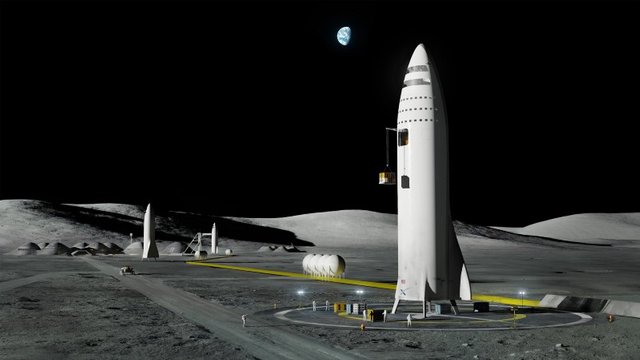
The Lunar Lander
The BFR would be capable of flying to the moon, landing, and returning to Earth without a need to refuel on the lunar surface, provided it is refueled in Earth orbit prior to departure. It could be argued that this variety is the same basic vehicle as the space truck variety, although the different mission profile might require some different internal hardware.
Also, there has been some debate as to SpaceX doing a lunar mission. In fact, SpaceX has always been open to flying customers to (or around) the moon, assuming the customer is paying for it. It just hasn’t been a part of SpaceX’s primary mission, the colonization of Mars, which takes a different set of technology to accomplish.
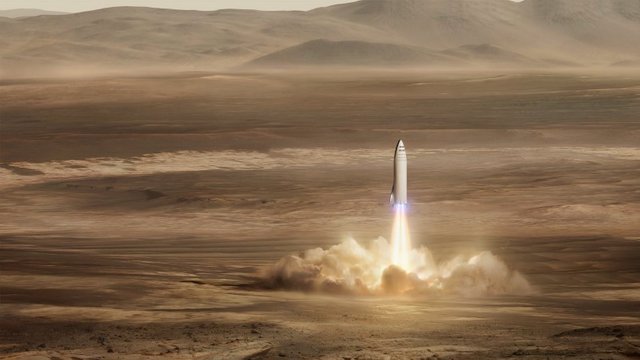
The Martian Lander
Obviously, the BFR has as its ultimate mission the ability to deliver crew and equipment to Mars. As mentioned for the Lunar variety, it could be argued that this version is the same basic vehicle as the space truck, although the different mission might require some different internal hardware. For a mars mission, the process is much more involved than any Earth orbit or lunar mission.
The vehicle would fly into Earth orbit with almost empty tanks. Then a series of tankers would fill the spaceship up to capacity. Once refueled, it then travels to Mars. Upon landing on Mars, fuel depots using the Sabatier process or some variant thereof, will be used to refuel the booster and allow it to return. Mars’ lower gravity allows the spaceship to launch and return to Earth without the use of a booster.
Point to Point Earth Transport
Ever since the first reveal in 2016, many have seen that any system capable of inexpensively travelling to Earth orbit and beyond would have to be capable of inexpensively travelling from one place to another on Earth. In point of fact, it is already possible to deliver humans from one point on Earth to another point rapidly using a rocket system. That is effectively what happens when people are delivered to the ISS and then return — if you subtract the whole rendezvous and staying in orbit for a while time. The challenge has always been the cost. The BFR, at least in theory, enables high speed point to point transportation for about the cost of an economy plane ticket for an equivalent trip because the only recurring cost is the fuel and labor for launches.
This technology has been talked about in science fiction novels for decades, but now it seems to be doable, all politics aside. This is something of an edge case and it would likely be a decade or more before this became a normal thing, just due to the infrastructure needs and the politics surrounding the ships entering and exiting airspace. There are also a number of treaties to consider and many air defense systems would have to be reviewed to accommodate the sub-orbital traffic.
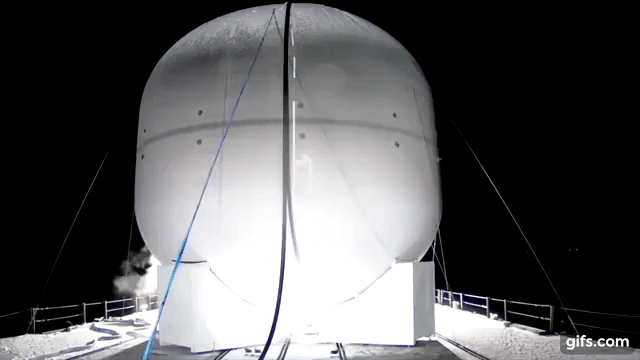
As mentioned earlier, there have been updates on the various component tests related to the BFR. The composite tank that was built at the previous 12M size was tested to its design pressure with cryogenic materials. Having reached that point and succeeding, SpaceX “went a little further” to see what its limits were. The tank, when it ruptured, flew 300 feet into the air before landing in the ocean where it was recovered for inspection.
The fact that the tank held at operational pressure at 12m is very promising news for the construction of the smaller 9m tanks on the newer BFR design. The use of carbon composite tanks, especially at the size of the BFR, is important for making a light spacecraft and thus optimizing fuel usage.
SpaceX has completed over 1,200 seconds of firing across 42 main Raptor engine tests. pic.twitter.com/EhxbPjd8Cj
-- SpaceX (@SpaceX) September 29, 2017
The Raptor engine has reached a significant milestone as well. SpaceX recently tweeted that the Raptor test engine has completed over 1200 seconds of firing across 42 tests. The longest test over the 42 tests was 100 seconds which is more than the typical 40 seconds that would be needed for a Mars landing. Given this engine has been designed from the ground up to be reusable over a very long lifespan, this is great news.
 )
)Near the end of the IAC 2017 presentation, Elon mentioned that tooling has already been ordered, the manufacturing facility is being built, and in the spring of next year, construction will begin on the BFR with the goal of having the first one completed in 5 years.
While it is unknown at this time if the booster will be built first or if it will be the spaceship, it is clear that next year will be an remarkable one for SpaceX. They will be launching one or more Falcon Heavy rockets, delivering astronauts to the ISS, and beginning construction on the first vehicle with the potential to make humans a truly space-faring species.
Chris Rogers is a SpaceX enthusiast and over all fan of privatized space flight. His goal is to author articles that make space related news and events approachable by lay persons and people just starting to follow the New Space industry.
Would you like to learn more? Here are some great resources for SpaceX information: